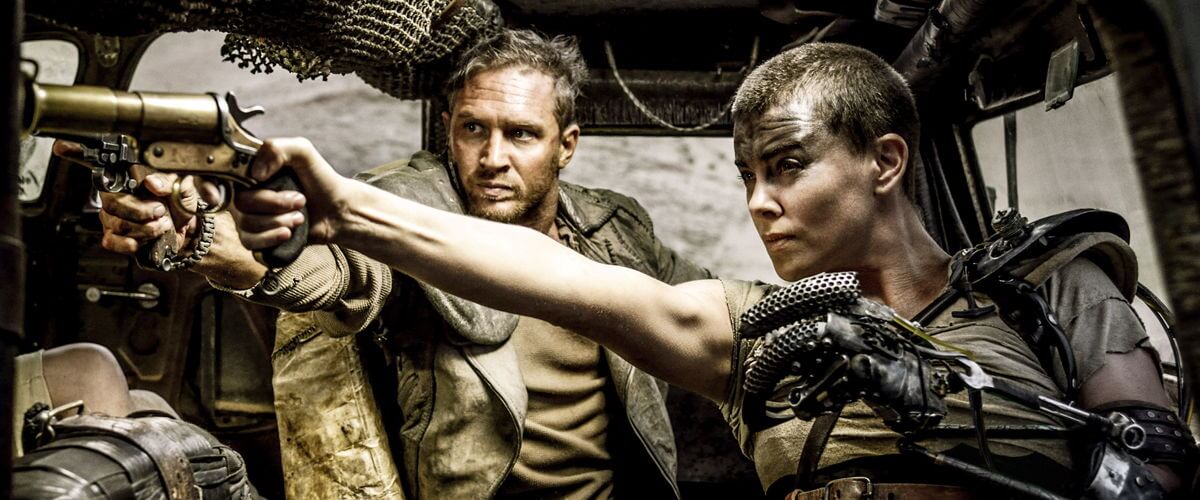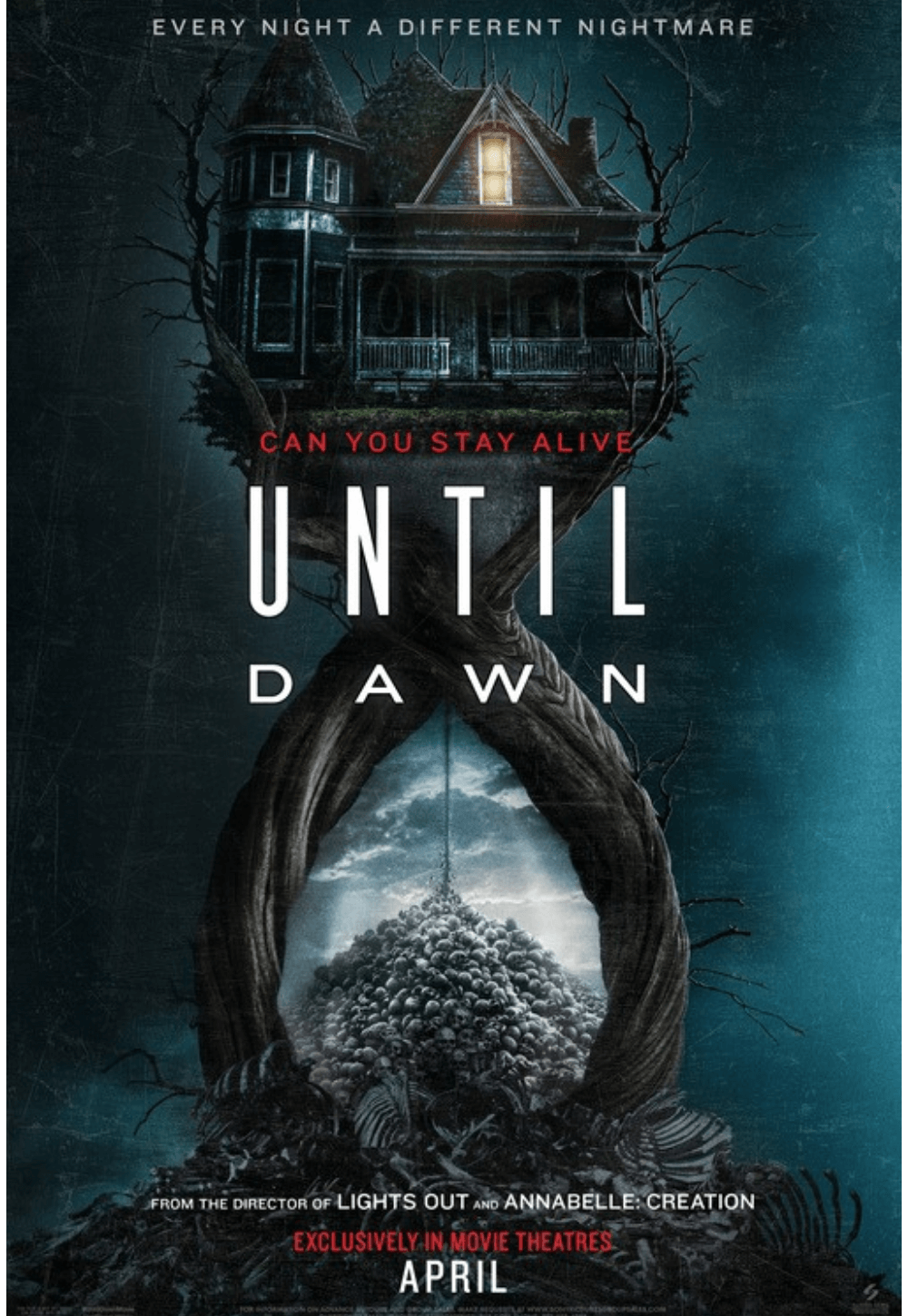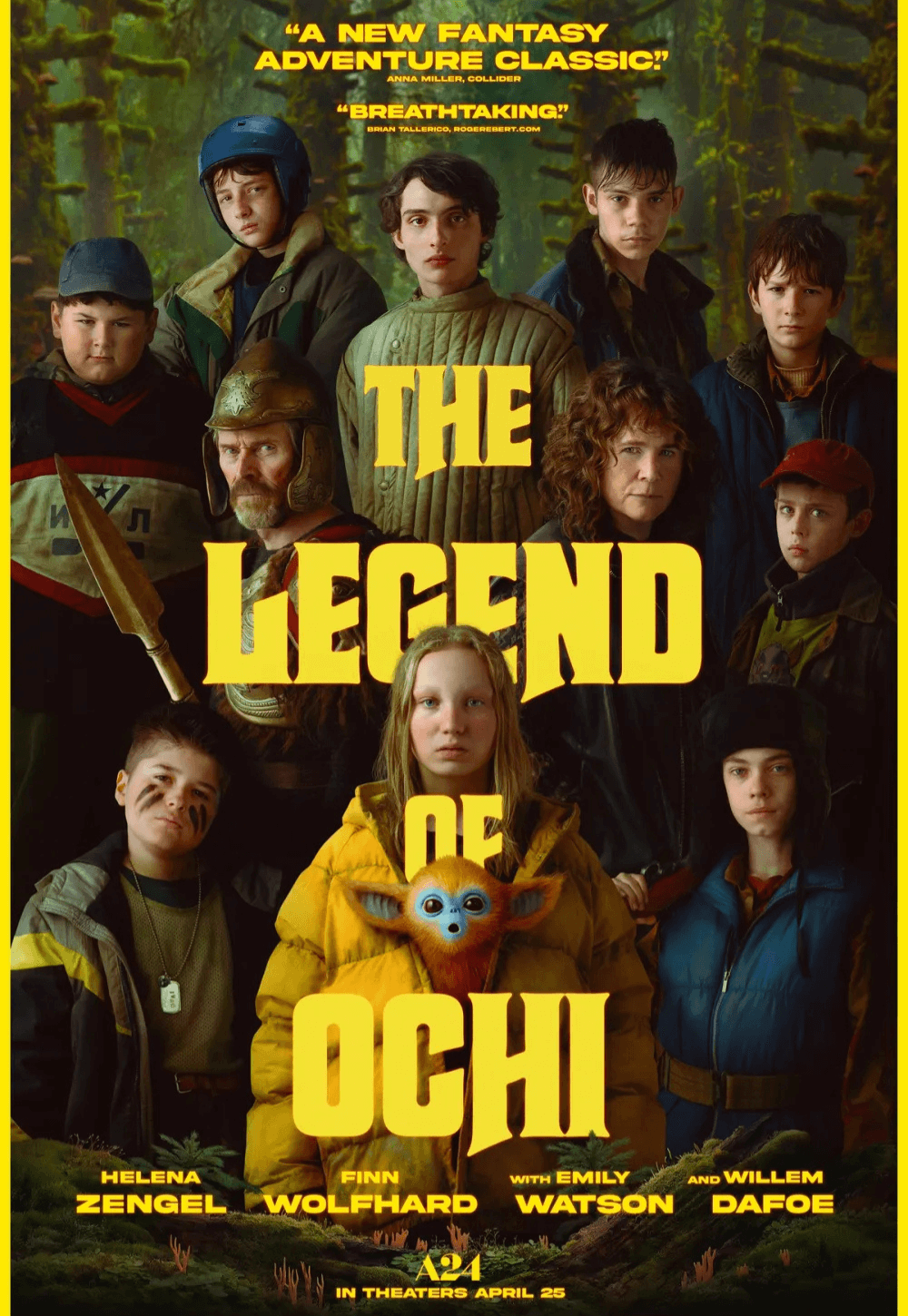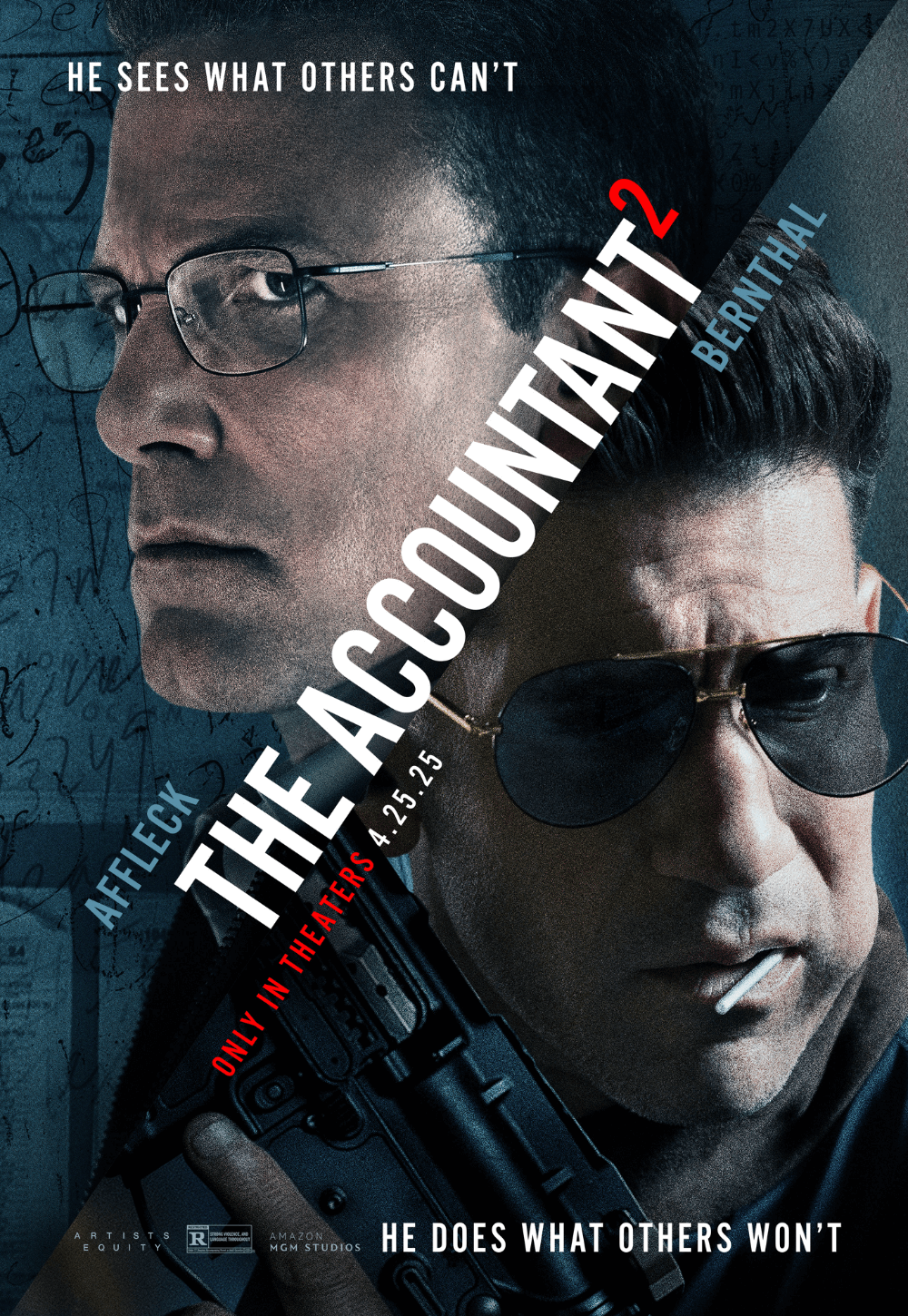
Top 10 Films of 2015
By Brian Eggert | January 7, 2016
One of the best years for film in recent memory, 2015 packed the bulk of its finest titles in the last month or two of the year. 2015 also gave us several artful releases and plenty more great entertainments, sometimes both at the same time. Those exceptional few that happened to balance art and commerce flew to the top of my Top 10 Films of 2015 list, as those titles are rare to come by. Fortunately, there are filmmakers like George Miller, Quentin Tarantino, and Pixar that can straddle both streams at once.
Below are a few honorable mentions in alphabetical order, two Runners Up, and the first two entries in my Top 10 Films of 2015. Enjoy!
The Next 10 (in alphabetical order)
Bridge of Spies, Carol, Crimson Peak, Ex Machina, The Good Dinosaur, Jurassic World, Mistress America, Spotlight, White God, Youth
Runners Up:
Irrational Man
Woody Allen’s shockingly underrated (hence my long, defensive review) dark comedy Irrational Man considers a theme he’s explored several times since 1989’s Crimes and Misdemeanors—the consequences of murder. Joaquin Phoenix plays a philosophy professor who justifies the murder of a veritable unknown because the moral consequence is in his favor. Phoenix stars across from a sprightly Emma Stone and Parker Posey, offering a complex and intense role wrought with questions of moral implication. But then there’s also a layer of absurdist comedy to the film. Many found Allen’s balance of humor and murder ungainly, but there’s a brilliance behind what Allen is doing here. Unlike heavier explorations of murder in Match Point and Cassandra’s Dream, or more comic takes in Manhattan Murder Mystery, Allen finds a charming way to represent his belief that the universe is empty and unforgiving, save for the feelings with which we fill it. Though, like Hitchcock, he suggests murder could be justified philosophically, he also feels the life of the mind is no place to live.
Room
Room is about a young woman trapped in a kidnapper’s shed for seven years and her eventual release. Alone except for her 5-year-old boy, fathered by her captor, the character played by Brie Larson maintains multiple fronts at once: She must be submissive to her kidnapper, motherly and supportive to her son, who knows nothing of the outside world, and must maintain her sanity in her own mind. Larson gives a breakthrough performance that deserves a shower of awards; she’s raw and deeply affected, and her portrayal only becomes more complicated when she and her son escape. Youngster Jacob Tremblay also gives an incredible turn as a boy experiencing the world for the first time. Emma Donoghue adapted her from-a-child’s-perspective book into a stunning screenplay, and director Lenny Abrahamson helmed a sensitive, emotionally raw experience. The formal presentation makes incredible use of the confined space in the first half, whereas the jarring transition into a normal life reaches dramatic heights, all through the expressions of the film’s excellent cast.
10. Brooklyn
Highly praised by critics but underseen by general audiences, Brooklyn is a classically told romance set in the 1950s, represented here with gorgeous costumes and flawless production design. An incredibly modulated Saoirse Ronan stars as a young Irish immigrant making her way to America. There, she gets a job as a shopgirl, falls in love with an Italian fella, and learns to love her new country. When a family tragedy calls her back to Ireland, she’s forced to ponder the meaning of “home” and make some difficult decisions. Though the story sounds familiar, director John Crowley and screenwriter Nick Hornby deliver rich storytelling and Ronan offers her finest performance yet in a relatively short career of excellent roles. A heartening story about love, carving out a life for yourself, and perhaps the most hopeful time for the American Spirit, Brooklyn is a warm kind of romance that is rarely made today.
9. Phoenix
German filmmaker Christian Petzold delivered his most accessible film with Phoenix, a heartrending post-World War II story about a Jewish woman’s readjustment to life after surviving Auschwitz. But it’s far from a standard, Oscar-baited Holocaust tale. The excellent Nina Hoss plays Nelly, whose face must be reconstructed after enduring beatings while in captivity. When she attempts to reconnect with her husband (Ronald Zehrfeld), he doesn’t recognize her and thinks she’s just another lost soul in postwar Germany. Pretending to be someone else, Nelly soon learns her husband, believing her dead, is after her inheritance. From there, the film delves into a powerful and tense interplay between the two characters. This economically told drama about the process of reconstruction, both emotionally and physically, has also been interpreted as a psychological identity thriller on par with Hitchcock’s Vertigo. However bold a comparison that may be, the film contains profoundly affecting performances and a pitch-perfect ending.
8. Tie: Bone Tomahawk & Slow West
Perhaps it’s cheating to list two films for one entry on a top 10 list, but Bone Tomahawk and Slow West have much in common, aside from being four-star Westerns. Each involves a long journey across rugged, dangerous terrain, and in each its characters bond through the course of that journey. Each leads up to a violent confrontation. Each includes a deliberately paced story and beautiful photography. And each marks the filmmaking debut of its director. Bone Tomahawk featured an ensemble cast (Kurt Russell, Richard Jenkins, Patrick Wilson, and Matthew Fox) heading out to rescue a woman from her cannibalistic troglodyte captors. Slow West has a quirkier, measured story about an Irish boy (Kodi Smitt-McFee) hiring a gunman (Michael Fassbender) to escort him across the frontier. These films may have been relegated to limited released and largely VOD debuts, but they also happen to be two of the most accomplished films of 2015. Watch them as a double-feature and you’ll see how well they pair together.
7. It Follows
Finding a great horror film is almost as rare as finding a great romantic comedy in the theater. They don’t come along too often, but when they do, they’re a refreshing change of pace. Few horror films have gotten under my skin as thoroughly as It Follows. The story involves a young woman (Maika Monroe) who has a curse of sorts passed onto her through sexual contact. Forevermore, a something will follow her relentlessly. It might appear as a friend, relative, or complete stranger, but if it gets you, you’re dead. You can’t escape it. And it never goes away, unless you sleep with someone and pass it on. Even then, if that person dies, it comes back to you. The unrelenting concept alone is enough to induce nightmares and energize what-would-you-do-in-this-situation discussions. But writer-director David Robert Mitchell also delivers a film of curious, undeniable style. The film seems to take place outside of time in a strange amalgam of the future and past, complete with tiny e-readers and vintage, 1980s-style music. It all amounts to an amazingly conceived and executed horror film teeming with suspense and some clear inspiration from John Carpenter.
6. Chi-Raq
Amazon’s first original production also happens to be Spike Lee’s best film in more than a decade. Chi-Raq was based on the Greek playwright Aristophanes’ play Lysistrata, about a sex strike to stop the Peloponnesian War. In Lee’s film, the gangland women of Chicago, a city whose death toll outnumbers the Iraq and Afghanistan conflicts combined, refuse to have sex until the violence stops. Their motto: “No Peace, No Pussy” rings through the streets and their movement spreads all over the world. Spoken largely in rhyming verse and formally staged like a Greek play, Lee’s expressive and energetic production cannot help but impress. Beyond a fascinating work of art, the filmmaker has also made a symbolic call to action by demanding his audience open their eyes to the truth. Funny, sexy, often controversial, and despite the audacious sensory overload at times, an emotional and unforgettably entertaining yet timely story, the film remains criminally under distributed—it appeared only in AMC theater chains and will appear in the coming months on Amazon.com.
5. Inside Out
Although I gave Inside Out a better review and would rank it higher than The Good Dinosaur, Pixar’s two releases in 2015 deserve to be recognized as the year’s best animated titles. Still, Inside Out remains the superior film and easily one of Pixar’s very best titles. Beyond a delightful story where personified emotions try to prevent an all-out breakdown, Inside Out may forever redefine how children think of their emotions. With a control room programming how you feel, it’s easier to accept and analyze why you feel this or that way; the film also suggests all emotions are healthy to feel and shouldn’t be suppressed or met with shame. Inspired, imaginative representations of nightmares and an imaginary friend (Bing Bong!) are delightful stuff, whereas the film’s lasting emotional consequence is profound. Never has the complexity of growing up been so wonderfully broken down in such an intricate, yet effortlessly accessible way—and moreover, delivered in a brief runtime of just under 90 minutes. This picture is a testament to Pixar’s economic and perceptive filmmaking.
4. Steve Jobs
Danny Boyle’s criminally underseen Steve Jobs felt like a stage play come to vivid life through dynamic camerawork, clever editing, and a brilliant ensemble led by Michael Fassbender’s take on the titular character. For whatever reason, the material didn’t click with general audiences when it opened in 2015, despite enthusiastic critical praise. Kate Winslet, Jeff Daniels, Michael Stuhlbarg, and Seth Rogen also starred in Aaron Sorkin’s acid-tongued screenplay, a work like Sorkin’s The Social Network that pulls no punches about its tech-savvy, emotionally distant biographical subject. Except, this is no standard biography. Sorkin looks at Jobs over the course of three crucial product launches, focusing on high-stress behind-the-curtain drama ranging from technical glitches to Jobs’ lack of presence in his daughter’s life. Through these three elongated sequences, we come to understand what drove him and how he masterminded his revolutionary comeback. This is exceptional filmmaking by Boyle and wonderfully acted scenes by his cast. Formally unconventional and intellectually stimulating, Steve Jobs is unique and unforgettable.
3. Tie: The Hateful Eight & The Revenant
Just like Bone Tomahawk and Slow West, there are enough similarities between Quentin Tarantino’s 70mm Roadshow Engagement of The Hateful Eight and Alejandro González Iñárritu’s The Revenant to justify a tie, as quick simply I can’t decide which is better. Both are Westerns set in wintry landscapes. Both feature outstanding casts and run well over two hours. Both contain indescribably gorgeous cinematography, with Robert Richardson shooting Tarantino’s film and Emmanuel Lubezki shooting Iñárritu’s. Both feature master filmmakers at the top of their craft. Both were troubled productions shot under punishing, cold conditions; and yet, both emerged as masterfully assembled showcases for their directors’ unique artistic talent.
Tarantino’s combination of Agatha Christie and John Ford finds a group of violent, shady characters holed-up in a haberdashery for a couple of cold winter days, each with ulterior motives. Richardson shot in the rare format of 70mm to capture beautiful, sprawling exteriors filmed in the Colorado Rockies. With visible grain and other observable imperfections on the print, the experience harkens back to watching classic Westerns in the theater, whereas the plot recalls tense, claustrophobic Westerns like Anthony Mann’s The Naked Spur. Tarantino’s ridiculously great cast (Samuel L. Jackson, Kurt Russell, Jennifer Jason Leigh, Walton Goggins, Demián Bichir, Tim Roth, Michael Madsen, BruceDern, and Channing Tatum) rolls with every twist, bombastic speech, and tense exchange the filmmaker has to offer. With all of Tarantino’s formal faculties operating at their highest level, he innovates on existing filmic staples to create something oddly original in the way on he can.
By contrast, The Revenant was a balance of poetry and savagery, Nature and spiritualism. Its beauty was only matched by its unrelentingly primal quality, complete with an unforgettable bear attack. Leonardo DiCaprio gives an Oscar-worthy performance as a man pulled along through the most pitiless of conditions by his drive for revenge, and yet his salvation resides in his spiritual motivations. DiCaprio captures a man torn apart by this internal struggle and renders a helluva performance. Inspired by true events, the film adopts the poetic feeling of Terrence Malick, where Nature and humans clash, and their only resolution is existentialist. Though vastly different than The Hateful Eight, the journey through Nature and character is very similar—similar enough that it leaves this critic split between the greatness of each.
2. Anomalisa
Charlie Kaufman’s latest cinematic project is many rare and unique things at once: 3D-printed, stop-motion animated, surrealist, existentialist, profoundly internalized, moving, and very often hilarious. To be sure, Anomalisa isn’t for everyone. The masses won’t know what to make of it. But for a certain segment of the audience who’ve been able to connected with Kaufman’s characters in Being John Malkovich, Adaptation, and Synecdoche, New York, the film is yet another beautifully composed filmic revelation. Along with his co-director Duke Johnson, Kaufman tells the story of Michael (voiced by David Thewlis), who sees everyone as a variation on the same person (everyone is voiced by Tom Noonan to hilarious effect). Until he meets Lisa (Jennifer Jason Leigh), who seems exceptional and different. While this story sounds simple, it revels in the mundane, ironic, and dryly satirical in an exceptionally creative way, from which audiences can extract Kaufman’s very personal worldview. From Carter Burwell’s hypnotic score to the fascinating detail of the production, Anomalisa is an expertly assembled film and a singular experience unlike anything you’ve ever seen.
1. Mad Max: Fury Road
What a meticulously frenzied action film George Miller has made with Mad Max: Fury Road, a pseudo-sequel to the series Miller started in 1979 and last explored in 1985. With blazing car chases and visceral editing, the film proves the 70-year-old director hasn’t lost his ability to wow audiences with wildly fast car chases and bravado action scenes. He also conjured a fantastic performance by Charlize Theron and an impressive, primal rethinking of the Mad Max character by Tom Hardy. A story rich with feminist overtones and often disgusting post-apocalyptic details, the nonstop chase thrills the viewer to exhaustion. Miller uses a minimum of CGI to achieve authentic crashes, explosions, and stunts, creating a throwback kind of film that remembers how actioners used to be made, even while it outshines any other film of its kind (even the earlier, Mel Gibson titles).
And while actioners such as this rarely receive a positive response outside of cult fandom, Mad Max: Fury Road also happens to be one of the best-reviewed titles of 2015, earning the National Board of Review’s top film award. It’s something truly exceptional when a genre film such as this gets acknowledged for being masterful on such a grand scale. Yet, many viewers have left the film puzzled, wondering why so many critics have showered the film with such extravagant praise. The key is how Mad Max: Fury Road uses the cinematic language in a deceptively simple, yet wholly complex way. The narrative is straightforward and linear, while the intricate editing remains perfectly crafted, despite jumping between countless cars and explosions. Harkening back to John Ford’s Stagecoach (1939), the film is “about” the basic drives of cinema and how great filmmakers manipulate the apparatus. Most importantly, it proves there’s hope for pure cinema in the Digital Age.
Consider Supporting Deep Focus Review
I hope you’re enjoying the independent film criticism on Deep Focus Review. Whether you’re a regular reader or just occasionally stop by, please consider supporting Deep Focus Review on Patreon or making a donation. Since 2007, my critical analysis and in-depth reviews have been free from outside influence. Becoming a Patron gives you access to exclusive reviews and essays before anyone else, and you’ll also be a member of a vibrant community of movie lovers. Plus, your contributions help me maintain the site, access research materials, and ensure Deep Focus Review keeps going strong.
If you enjoy my work, please consider joining me on Patreon or showing your support in other ways.
Thank you for your readership!
Brian Eggert | Critic, Founder
Deep Focus Review




